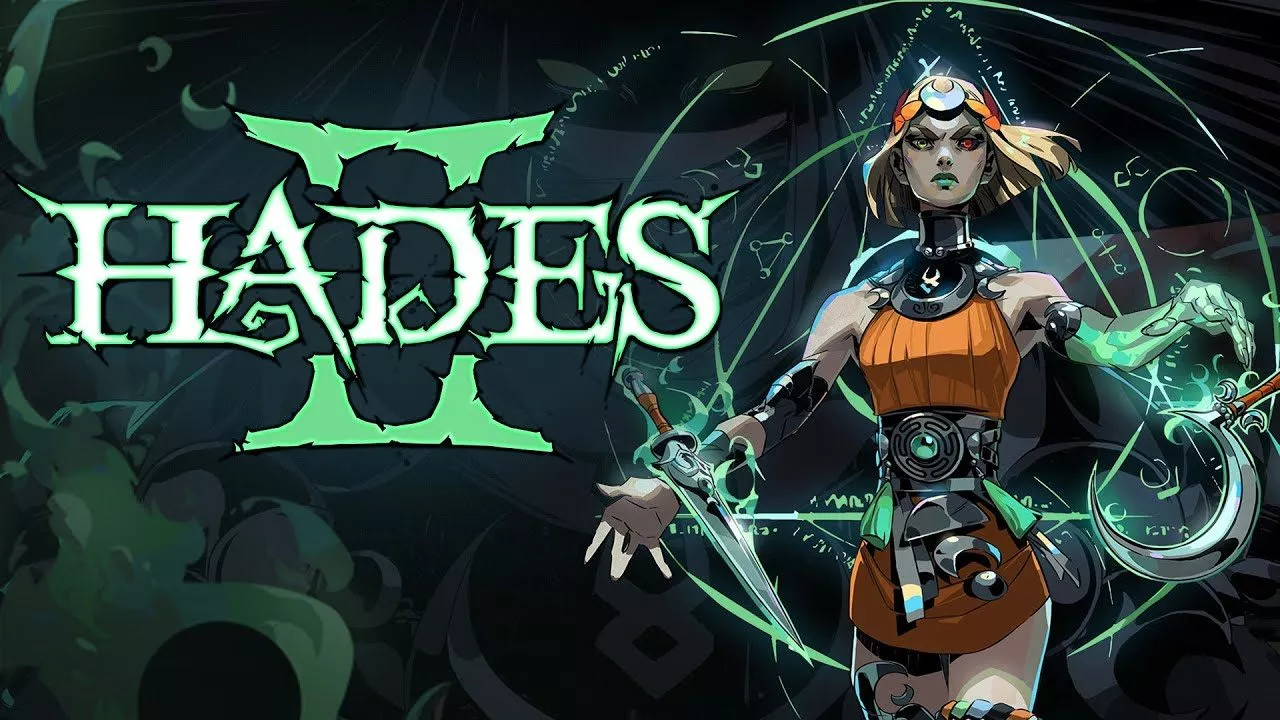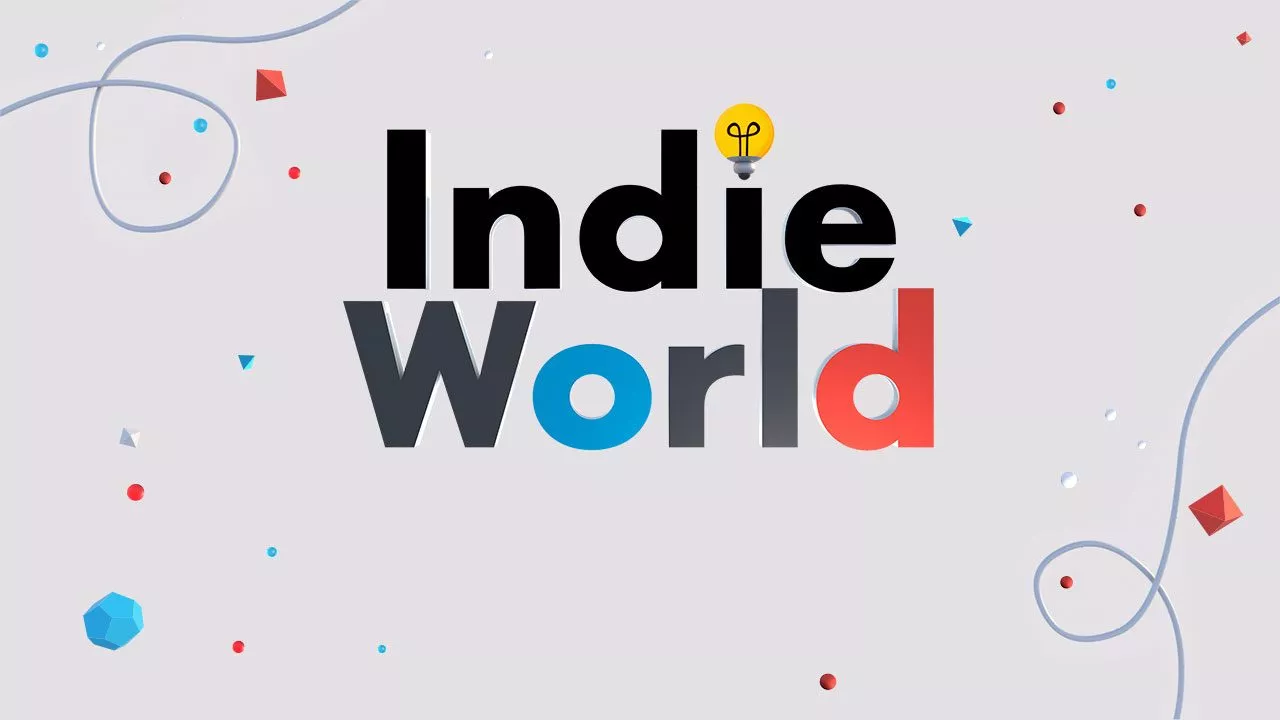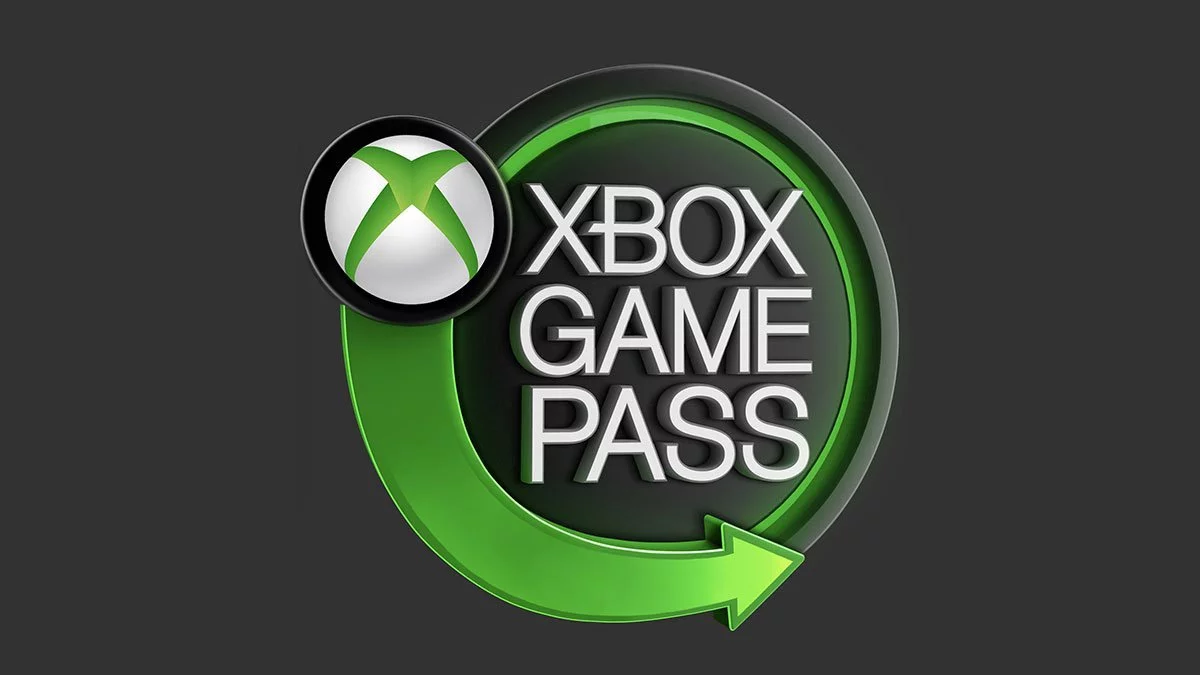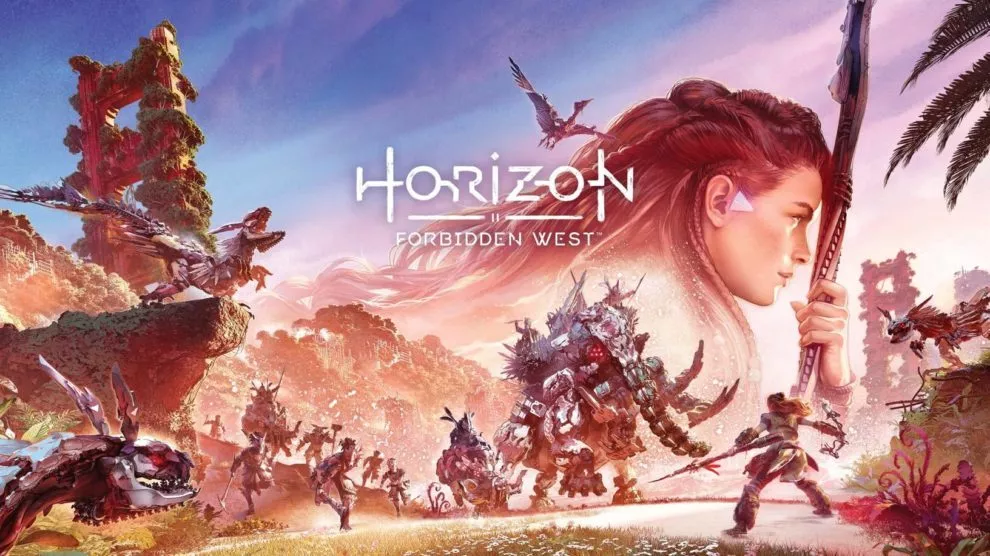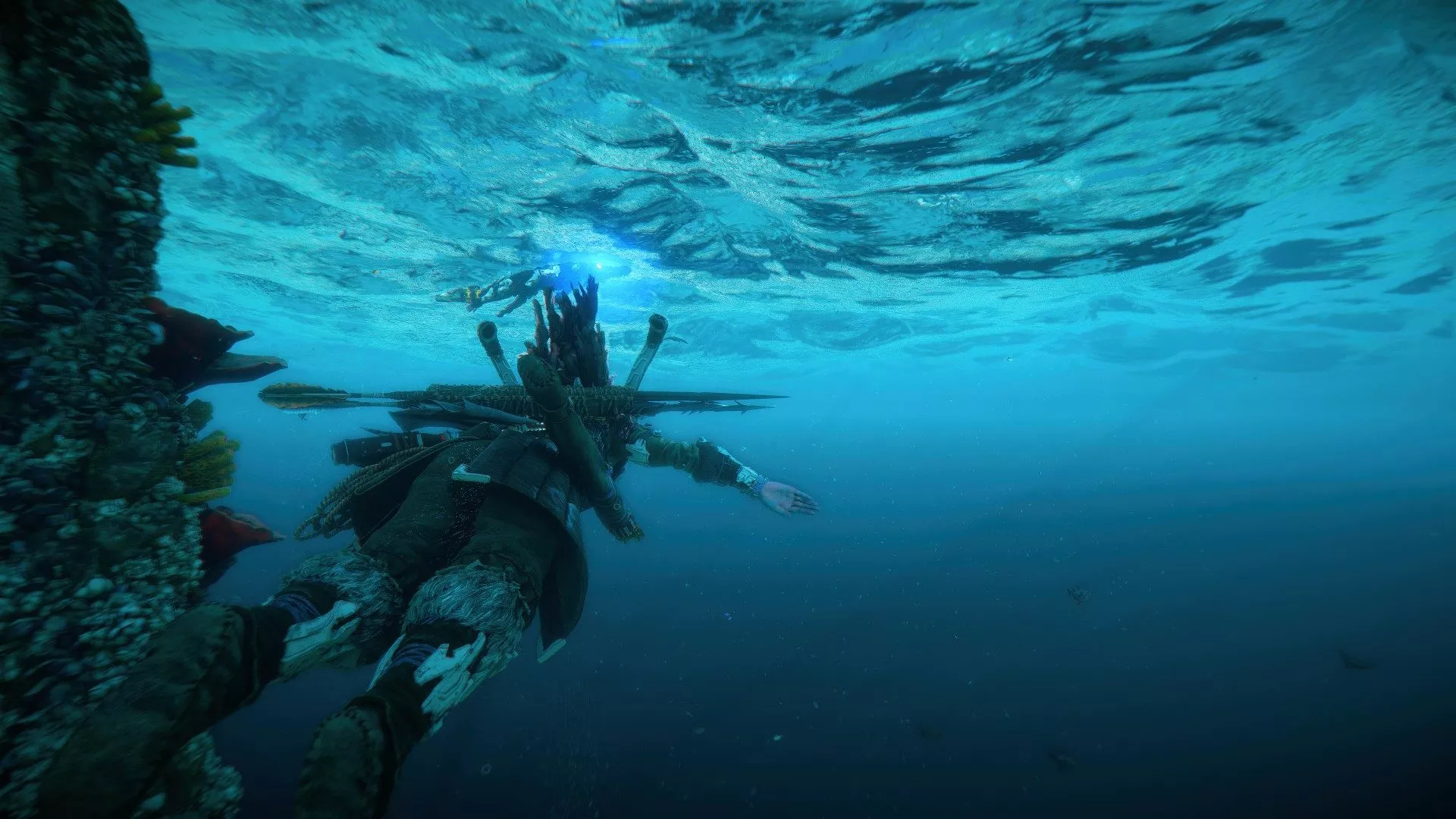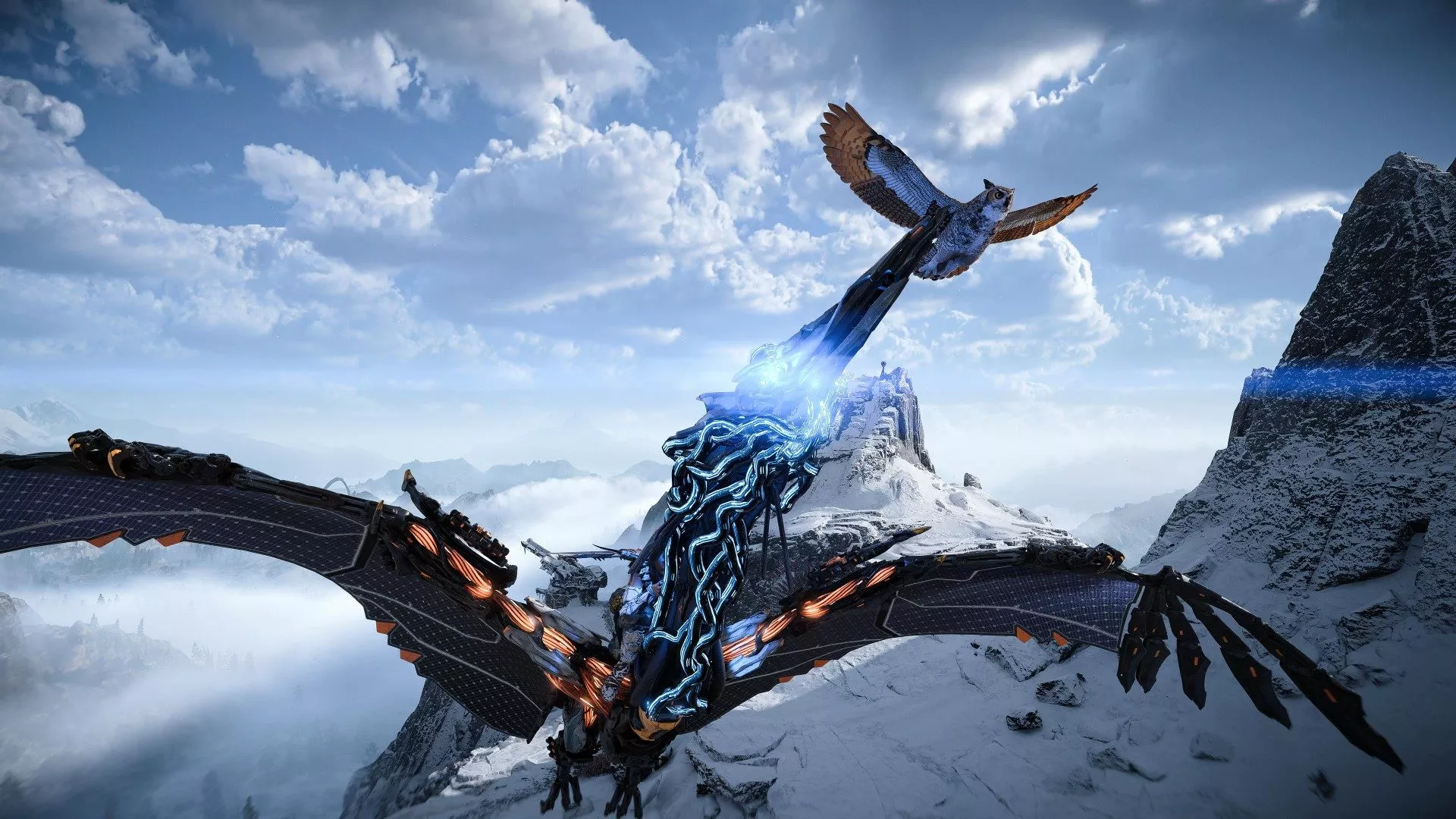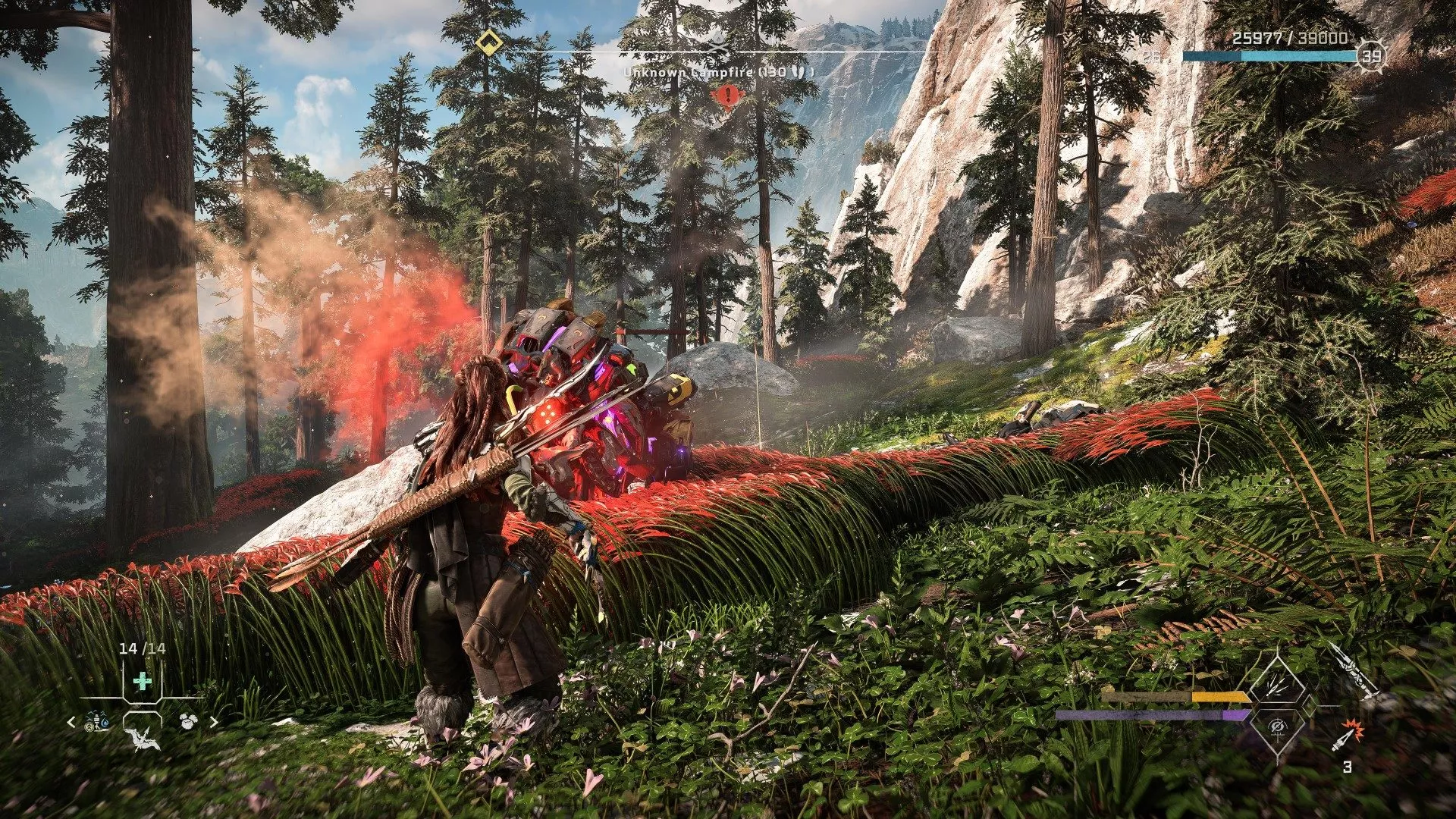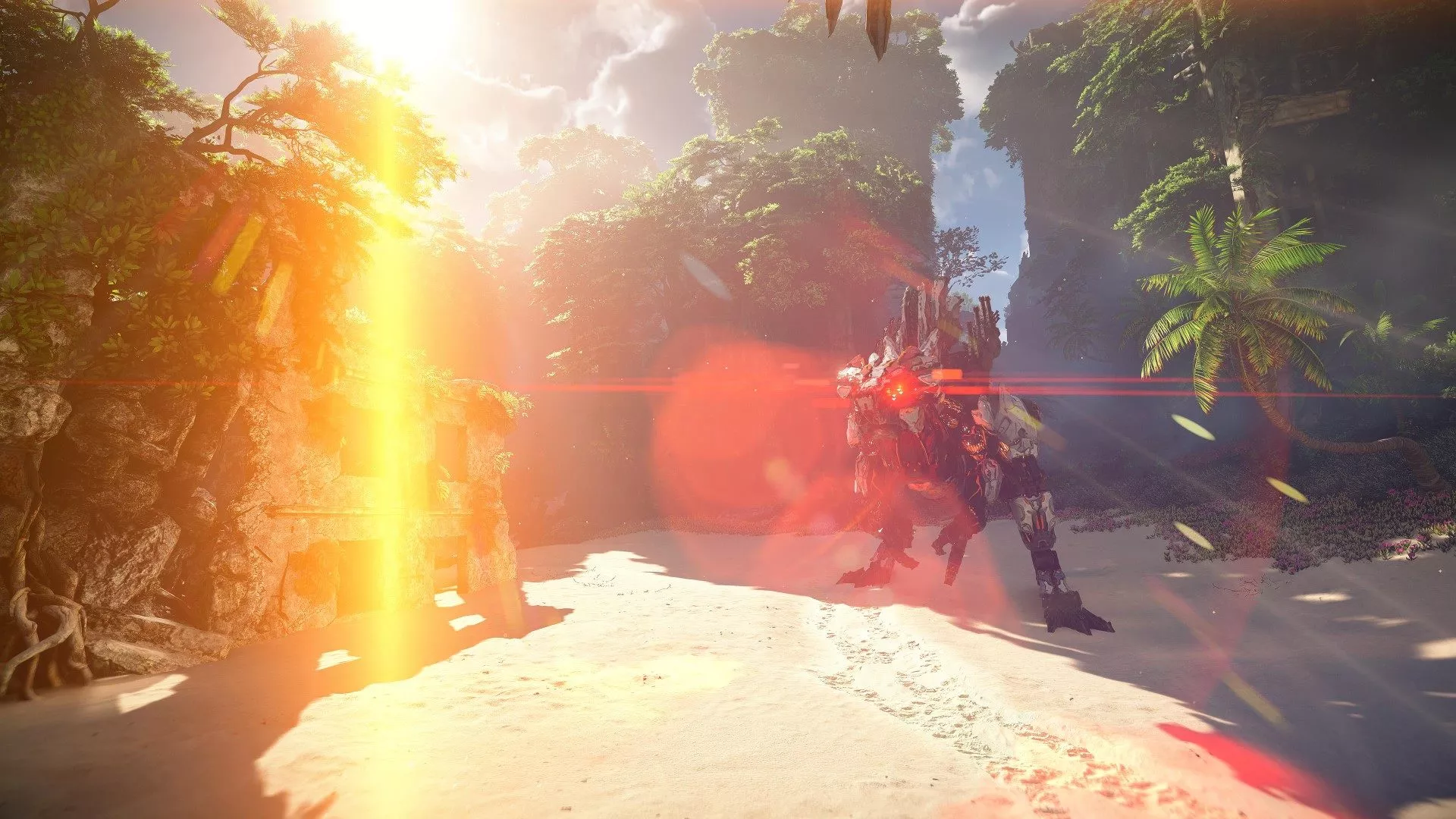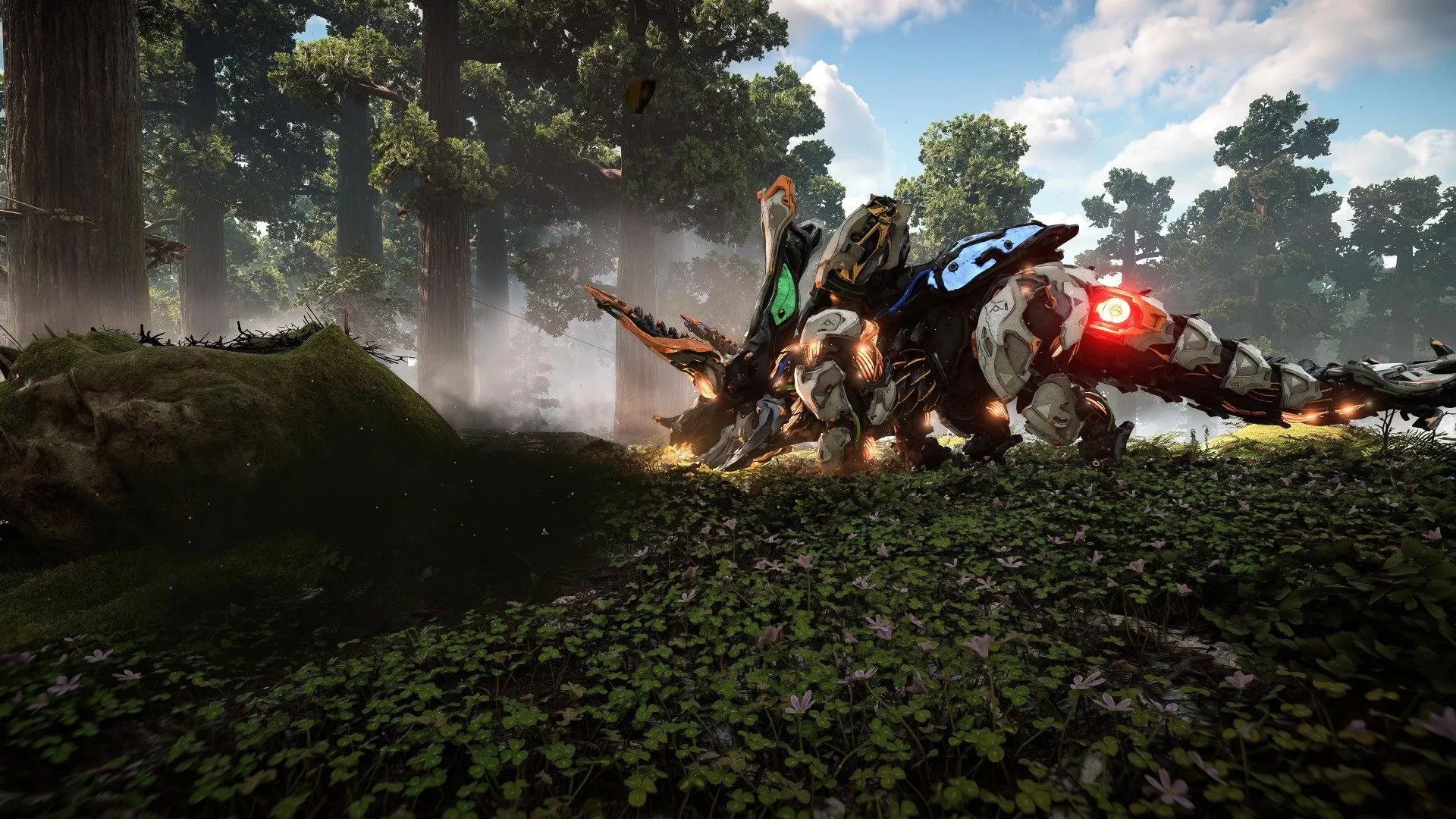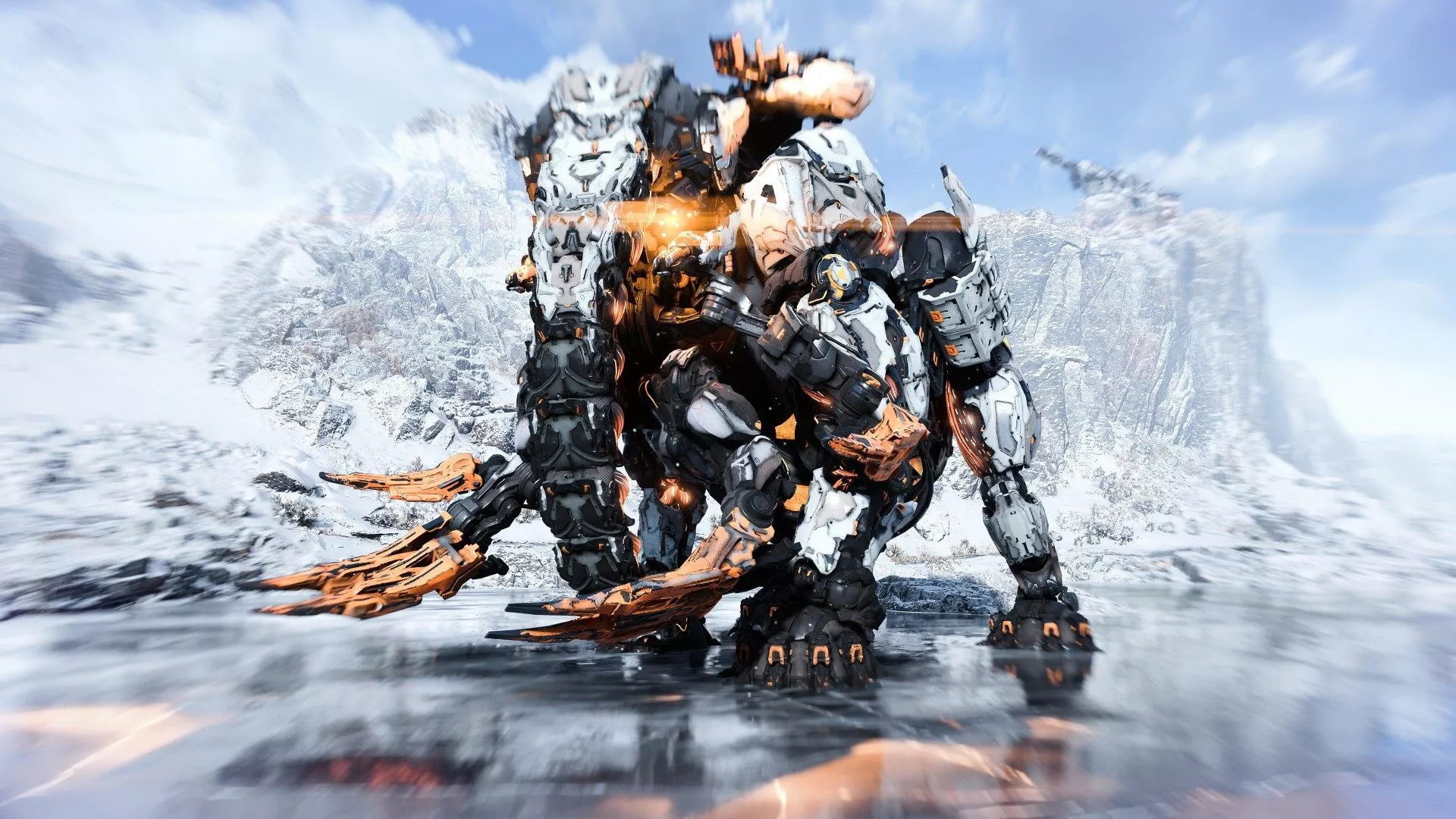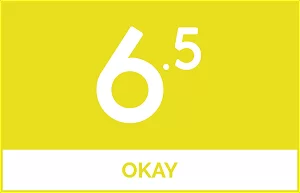A grand, glorious world, and only one real way to tackle it.
Robot dinosaurs. For many, that’s all I need to say. It’s a concept that makes so much sense that it’s almost ludicrous that it didn’t exist in games before Guerrilla Games gave us the first entry in the series, Horizon Zero Dawn. The Dinobots Industrial Complex must be daunting indeed.
Horizon Forbidden West executes on that promise in wonderful ways. There’s a plesiosaur robot, the Tideripper, so you can hunt the SoC-Ness Monster if you want. There’s the Tremortusk, a woolly mammoth robot with four tusks, any of which will skewer you if you’re not paying attention. Sunwings add new flying machines to the mix, bringing the Pterosaur flavour missing from the original.
You find all of these — and more — spread wide across a much larger open world this time, one with multiple distinct biomes. If Zero Dawn had a fault, it was that it was very two-speed. You were in the Nora’s hidden valley, the Embrace, and then you weren’t.
Here, each biome feels as large as the original itself. The desert sands of what was once Las Vegas form rolling dunes for you to cross, akin to an epic pulp adventure novel. In the mountains, snow lays heavy and you can easily get distracted watching Aloy form tracks in the powder as she trudges through it. When you reach the jungles, ancient redwoods envelop you in their majesty even as the undercanopy — and there’s a lot of it in a Redwood jungle — surrounds you in greenery.
Horizon Forbidden West is a gorgeous game. It’s one of the best looking games I’ve ever played, a spectacle of colour and shape, crisp and clear and beautiful. It contrasts the glory of its natural environments against the staggering decay of its old world ruins and the angular menace of its robotic inhabitants with the sort of expertise we’ve come to expect from Guerrilla.
It looks its best when you dive underwater. Zero Dawn restricted Aloy’s aquatic adventures to little more than a duck and cover effort, but in this sequel she’s as free as a bird. An underwater bird. A cormorant or a penguin. A fish. I should have said ‘She’s as free as a fish’.
Anyway, after a main path upgrade, Aloy is free to spend as much time underwater as she likes, and it’s magical. It’s Horizon Forbidden West at its best, where the tight angle shot of Aloy swimming through the depths makes sense on every level. There’s a claustrophobia to it that creates a moment-to-moment sense of foreboding, but it leads to glorious instances of wonder when the thalassophobic nature of your environment widens to reveal a massive sea monster, lurking in the depths beyond.
Unfortunately things too often feel claustrophobic, even when Aloy isn’t underwater.
Don’t get me wrong: everything I said earlier about HFW‘s wide open world is true. You can go wherever you want, and you can do whatever you like — within the confines and context of the game.
But the confines and context of the game feel so narrow as to be overbearing.
Take climbing, for example. A great part of Horizon Zero Dawn was its traversal, which saw Aloy clambering and scrabbling her way from one side of her world to the other. There were clever puzzles to solve and tricky places to reach, and it was up to the player to use their wits and skills to achieve their goals.
In this you very quickly realise that wits play no role in your achievement. There is a single solitary solution to each problem you face, and no guile is required to determine it. Tap the scan button and Aloy’s Focus will helpfully highlight, in yellow, the one and only viable route up any cliff face.
This reduces bouldering to a tedious act of obligation, instead of the thrilling excursion it had been before. Aloy leaping and catching, just barely, one-handed on a hold no larger than her fingernails becomes annoying once you realise she had to head in this direction — that she was destined to barely make that jump, fated to catch herself at the very last second.
This bleeds across to every other facet of puzzle solving. There’s only one solution to any of these puzzles, and instead of solving them you’re simply waiting for Aloy’s Focus to work it out. Where in the original Focus felt like a tool at your disposal, the opposite is now true — Aloy (and by extension the player) are simply implements of the almighty Focus. A priest in its religion, bringing to the world of Horizon its good news.
Like any good priest, Aloy screams the good word of the lord and saviour Focus aloud for all to hear. A common solution to puzzles is to simply run around an area until Aloy says, outloud, what you need to do.
“I wonder if I can use that vent?” she’ll wonder. “I need to get higher if I want to reach that ladder. Maybe there’s a crate I can use.”
It’s a good system, and I appreciate its existence, but it happens so immediately that it further renders any need for deduction moot. At the start of the game, you see the solution and as you act upon it, she voices her query. But by the end, it has a Pavlovian effect — because her ambient voice line occurs the instant the player is in range of the solution, that voice becomes the dinging of the bell to signify the solution itself.
It can be made simpler, too, thanks to HFW’s robust accessibility options. I played the game on “Explorer” mode (as opposed to the easier “Guided” mode) and at medium difficulty, aiming to experience the default options where possible. The aforementioned Guided style of play is available and I appreciate Guerrilla’s efforts to provide something everyone can enjoy. Even on Explorer mode the game is too generous with its assistance, though, and it robs the player of any satisfaction to be had in solving a mystery.
The combat, too, is easily reduced to a one note symphony. While Horizon Forbidden West will thrust countless weapons — and weapon types — at you, by the end I found I only ever used three of them. I could have gotten away with just using one, if I hadn’t been stingy with my ammo management.
The Spike Thrower — especially one throwing spears rocking explosive tips — is the Super Shotgun of Forbidden West, so formidable in its damage output that all other weapons exist only as backups, or backups to backups. It does it all — it knocks off parts for upgrades, it deals heavy damage and it shreds armour.
This was a problem in 2016’s Doom (one fixed in Doom Eternal) and it is a problem here too. It’s mitigated somewhat by the need to farm ammo materials, but the loot economy is such that you never want for money, and simply buying those materials doesn’t even put a dent in your coffers.
I got notifications telling me I was underleveled for the challenge I was facing, and I never paid them any heed. Levels appear to do very little — as best I can tell, they only give Aloy more health. That means the only thing stopping you anywhere along the way is personal ability, which I love — but it does narrow the scope of the game even further, unfortunately.
What kept me persevering through the claustrophobic gameplay was the story of Forbidden West, which I think is spectacular. Horizon features such a wonderfully realised post-post-apocalyptic world, and the ways it cleverly reaches back into its history — our present — to provide an alternative perspective on things are fantastic.
The voice acting is revelatory, too. Truly some of the best in any game. I got tired of certain characters, because they wouldn’t shut up — Erend, near the end, has a tendency to speak what little is on his mind the moment a thought flits through it — but it was still always flawlessly acted, even when I didn’t want to hear it.
Sylens, played by Lance Reddick, is a brilliantly realised character, with realistic, well thought out motivations and needs. He also has the best line in the game — a blink and miss it throwaway that dropped my jaw, it went so hard. But the thing about Forbidden West is that all of the characters are built like Sylens — they’re all three dimensional. Even some characters on side quests have more depth to them than every single character in some other games I’ve played (*cough* Dying Light 2). With so much world to build out, I think Guerrilla does a great job at filling it with people who are worth interacting with — it makes seeking out side quests worth doing, slightly opening things up for the game.
Probably the biggest disappointment was a relative lack of polish. I saw multiple physics glitches as characters — friend and foe alike — would clip into the geometry somehow. Bosses routinely got stuck in loops where they would only use a single attack — fine when that attack was pointless, but annoying if they happened to get locked into firing a never-ending stream of homing electricity bubbles.
The day one patch rectified some of the loading issues — which sees the game blink black for a second as it attempts to catch up — but not all of them. Animals — both critters and dinobots — pop-in out of nowhere still. It stands out even more against the sheer gorgeousness that is Horizon Forbidden West on PS5.
But that’s how it is at the end of the day. It’s a game of contrasts. A game about robot dinosaurs where you spend far too much time fighting robot meerkats and boars instead for some reason. One with brilliant voice acting that you begin to hate because some characters won’t shut up. Where the side quests are great, but they’re so simple as to feel pointless. Where the combat features a complex balance between elemental strengths and weaknesses but you can ignore all that via a rain of explosive spearheads.
If you look at it from that perspective, it almost makes sense that Horizon Forbidden West is the most linear open world game I’ve ever played.
Horizon Forbidden West was reviewed using a promotional code on PS5, as provided by the publisher direct to the author. Click here to learn more about Stevivor’s scoring scale.
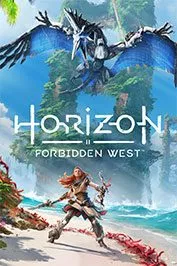 |
Horizon Forbidden West18 February 2022PS4 PS5 |
This article may contain affiliate links, meaning we could earn a small commission if you click-through and make a purchase. Stevivor is an independent outlet and our journalism is in no way influenced by any advertiser or commercial initiative.



